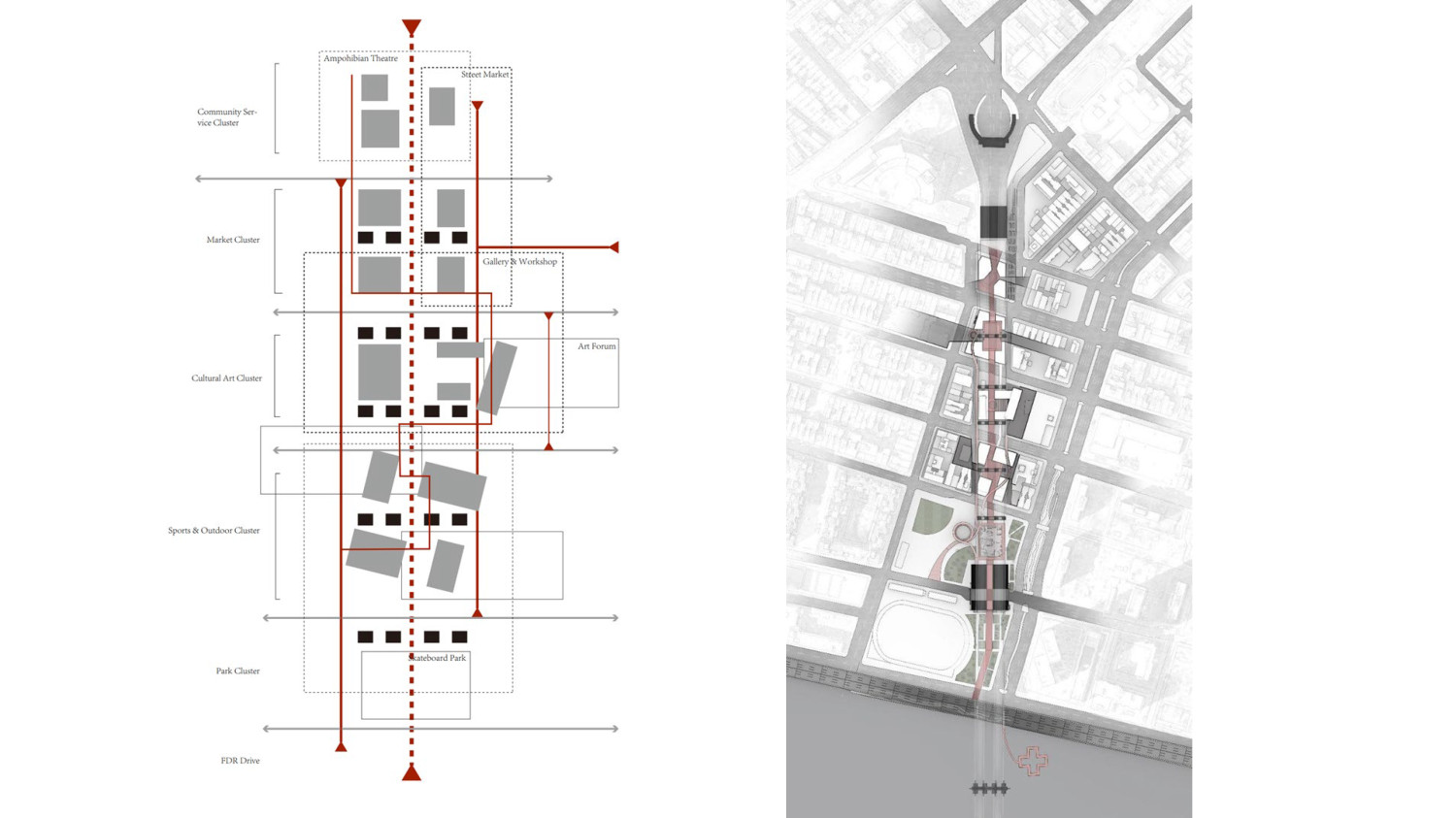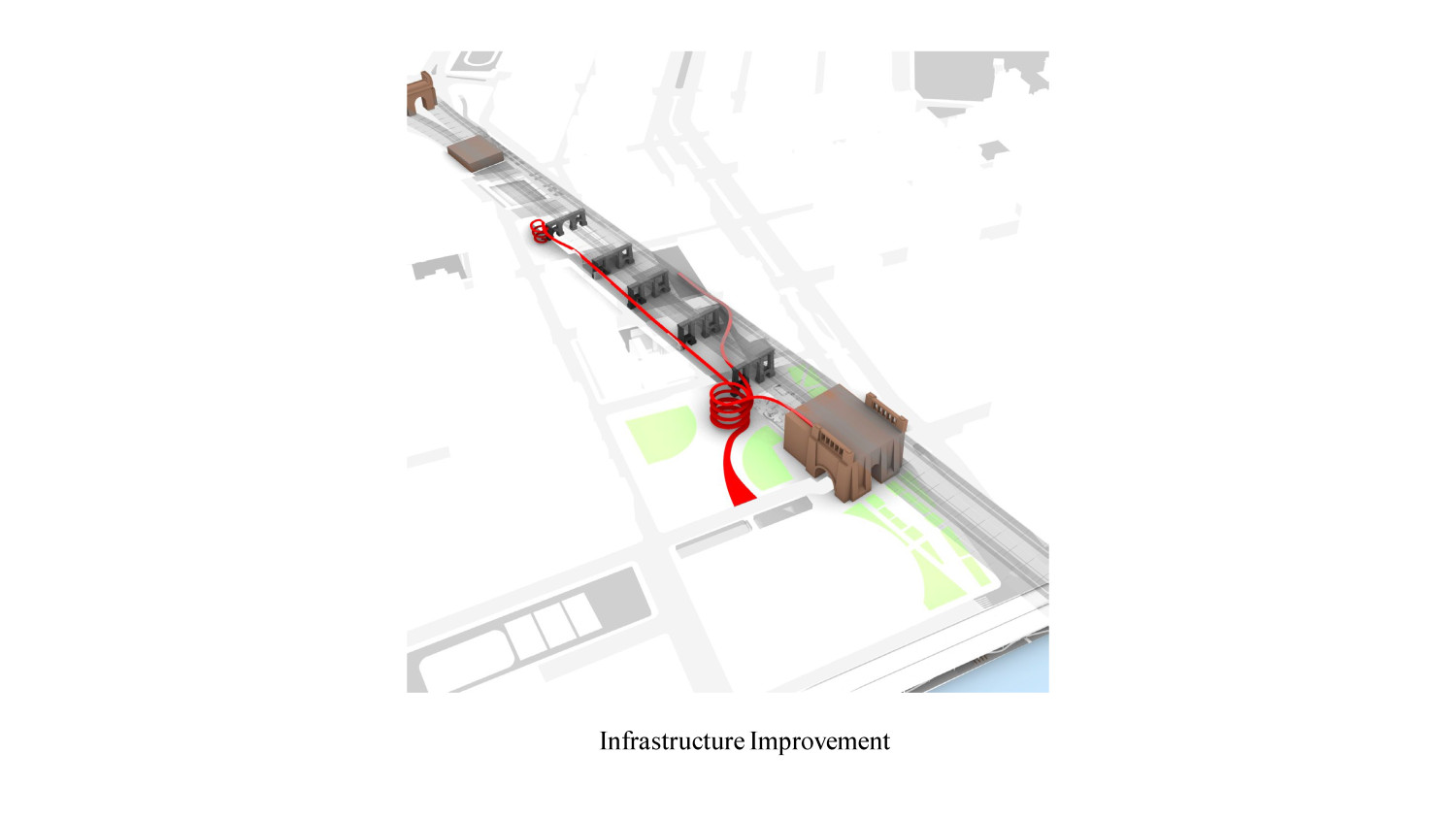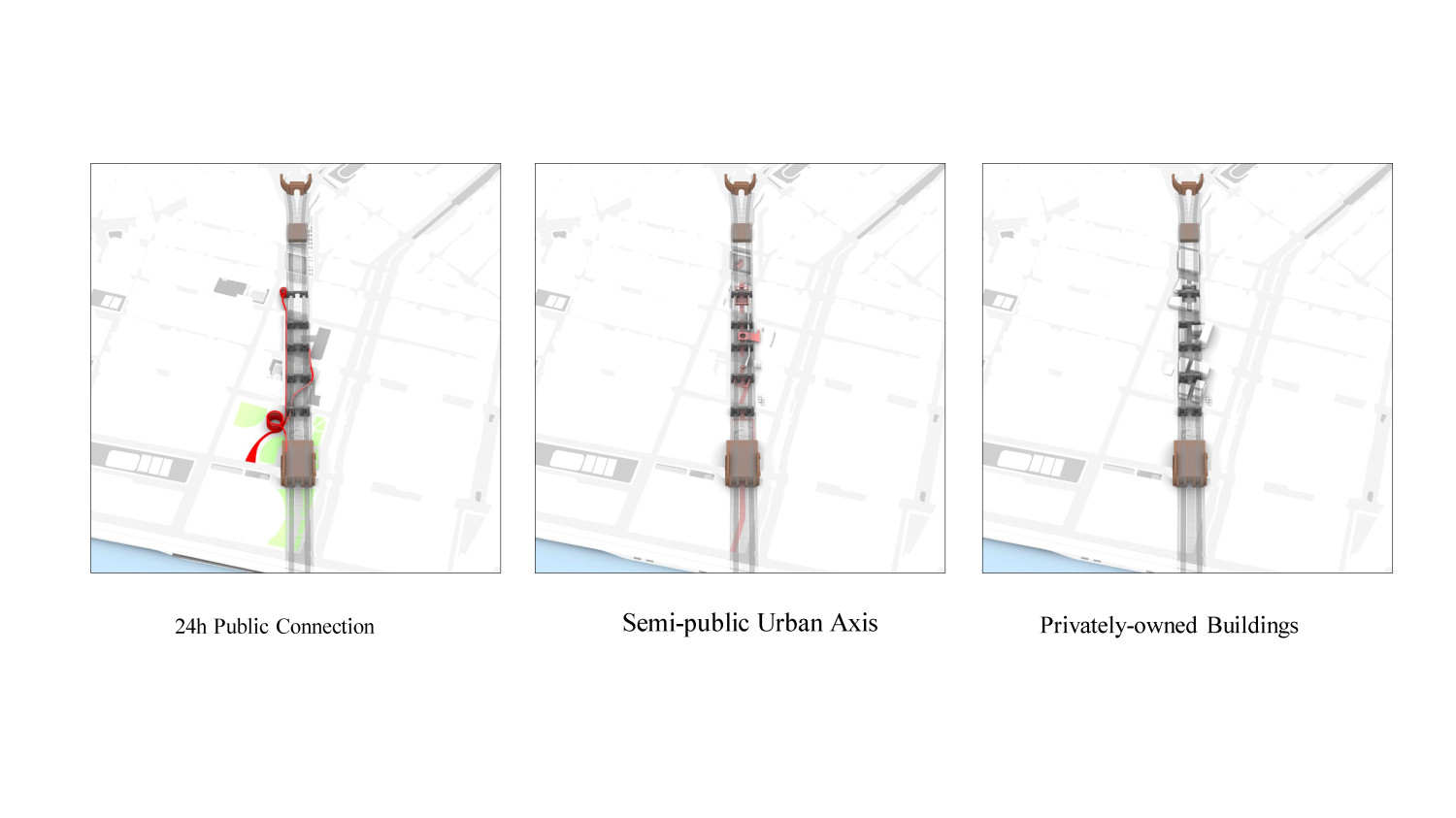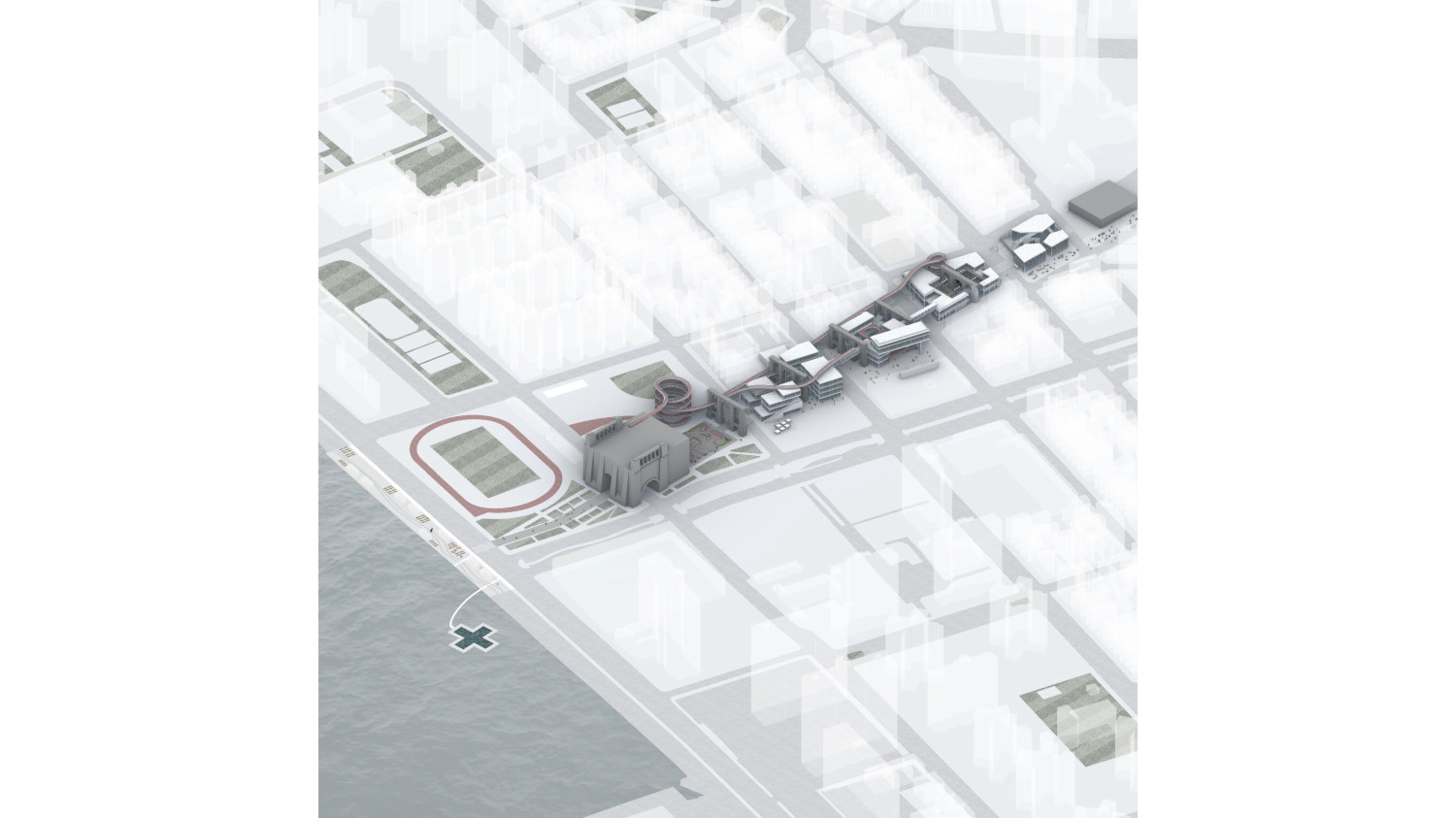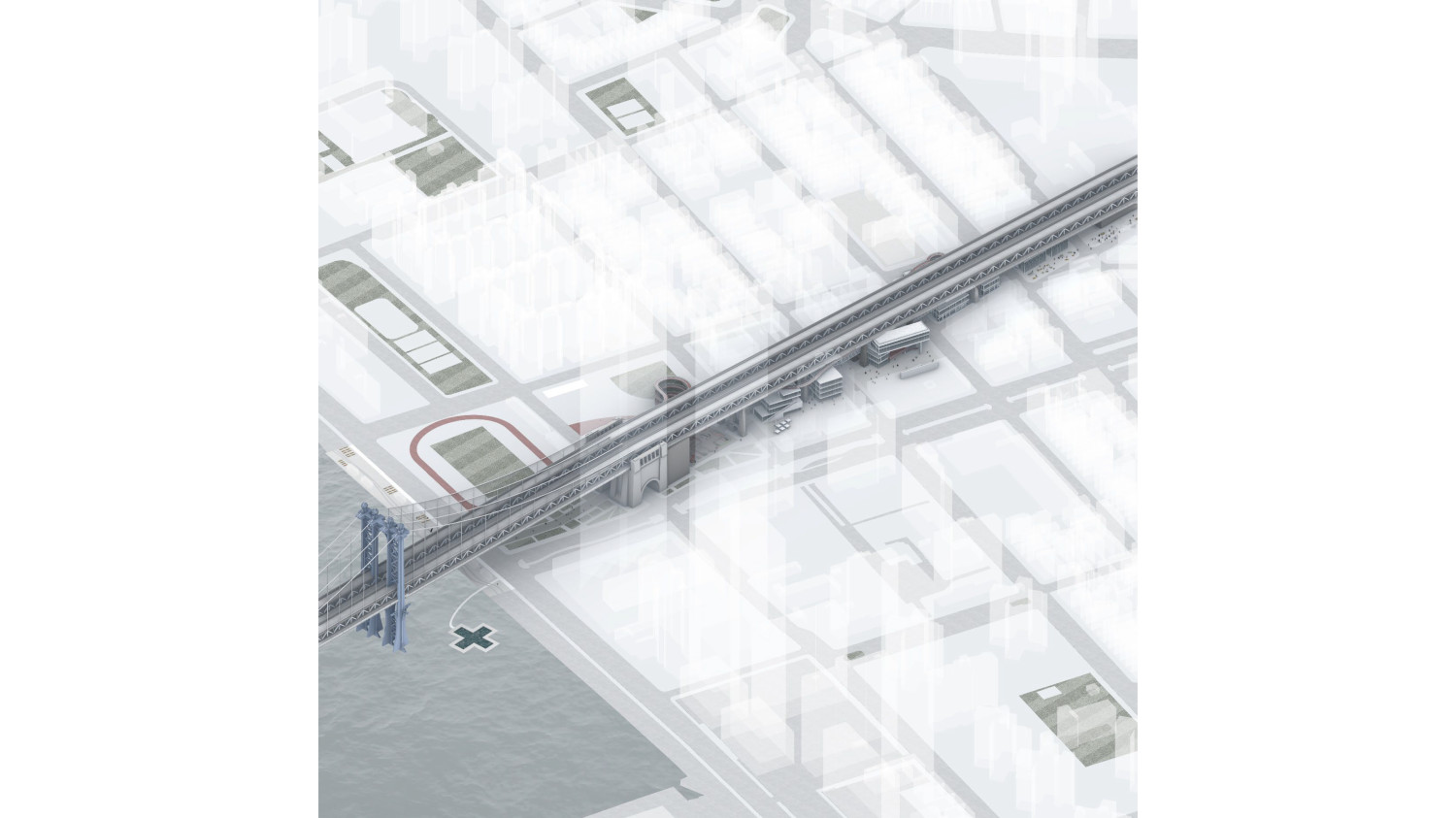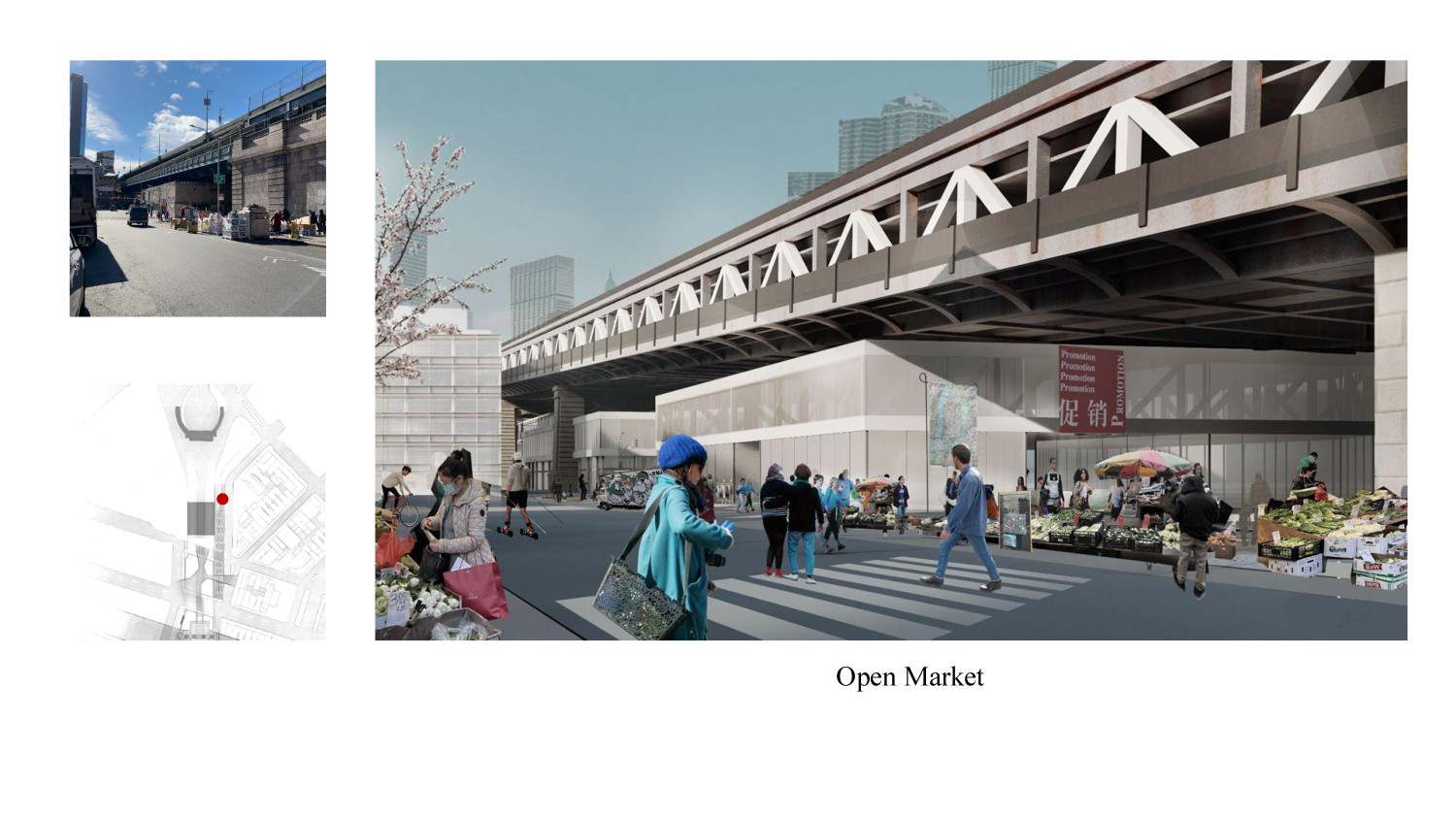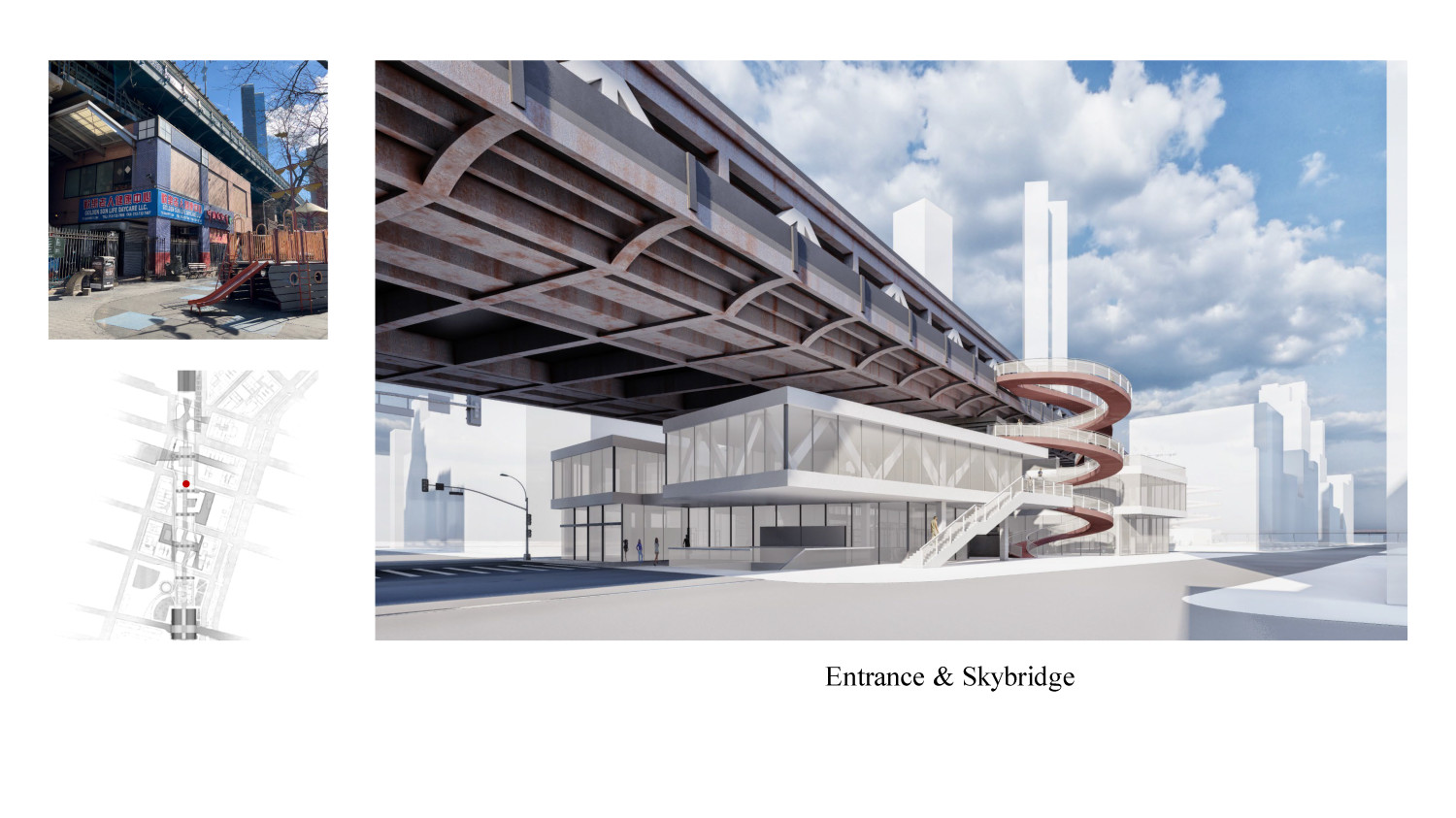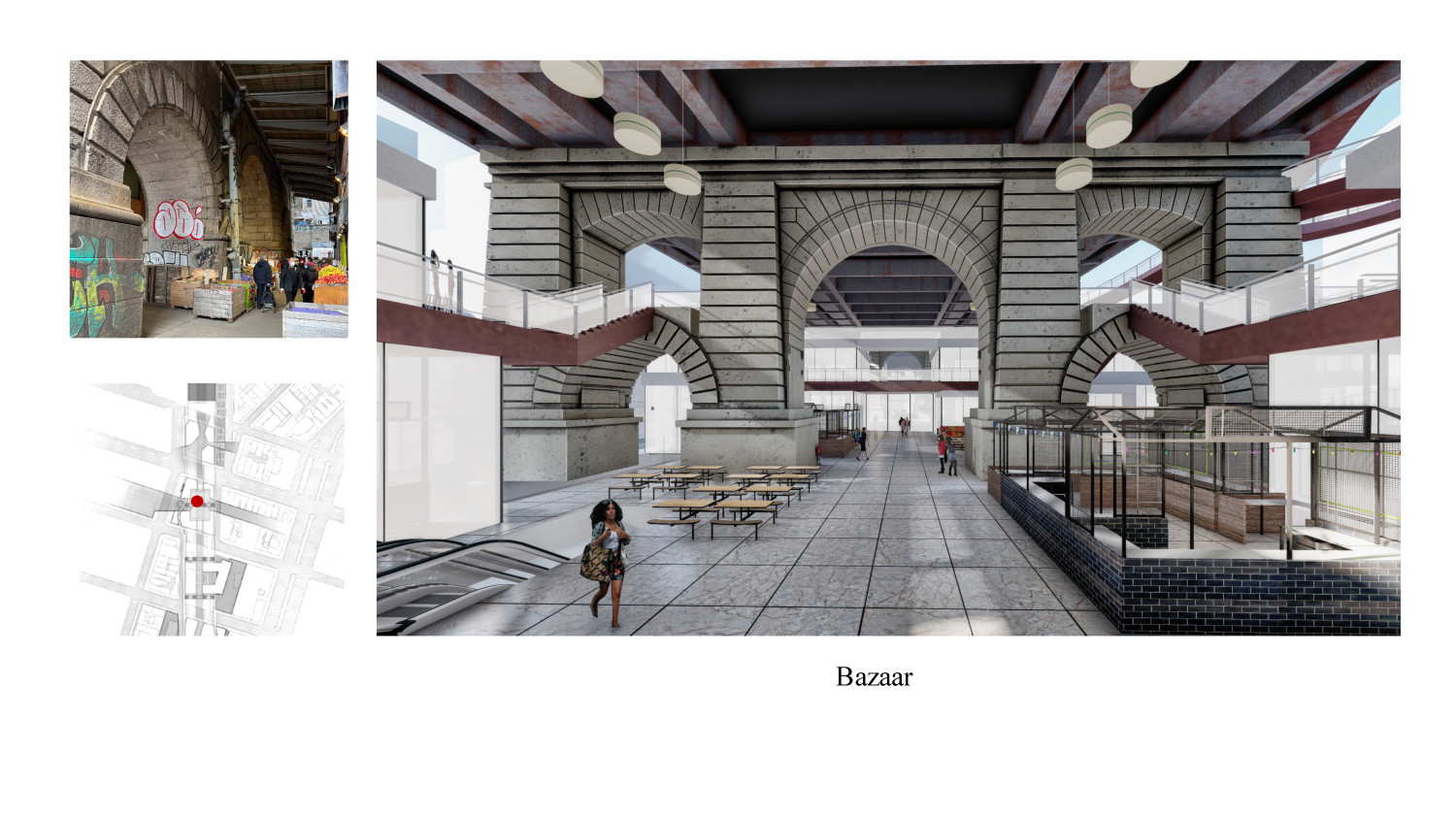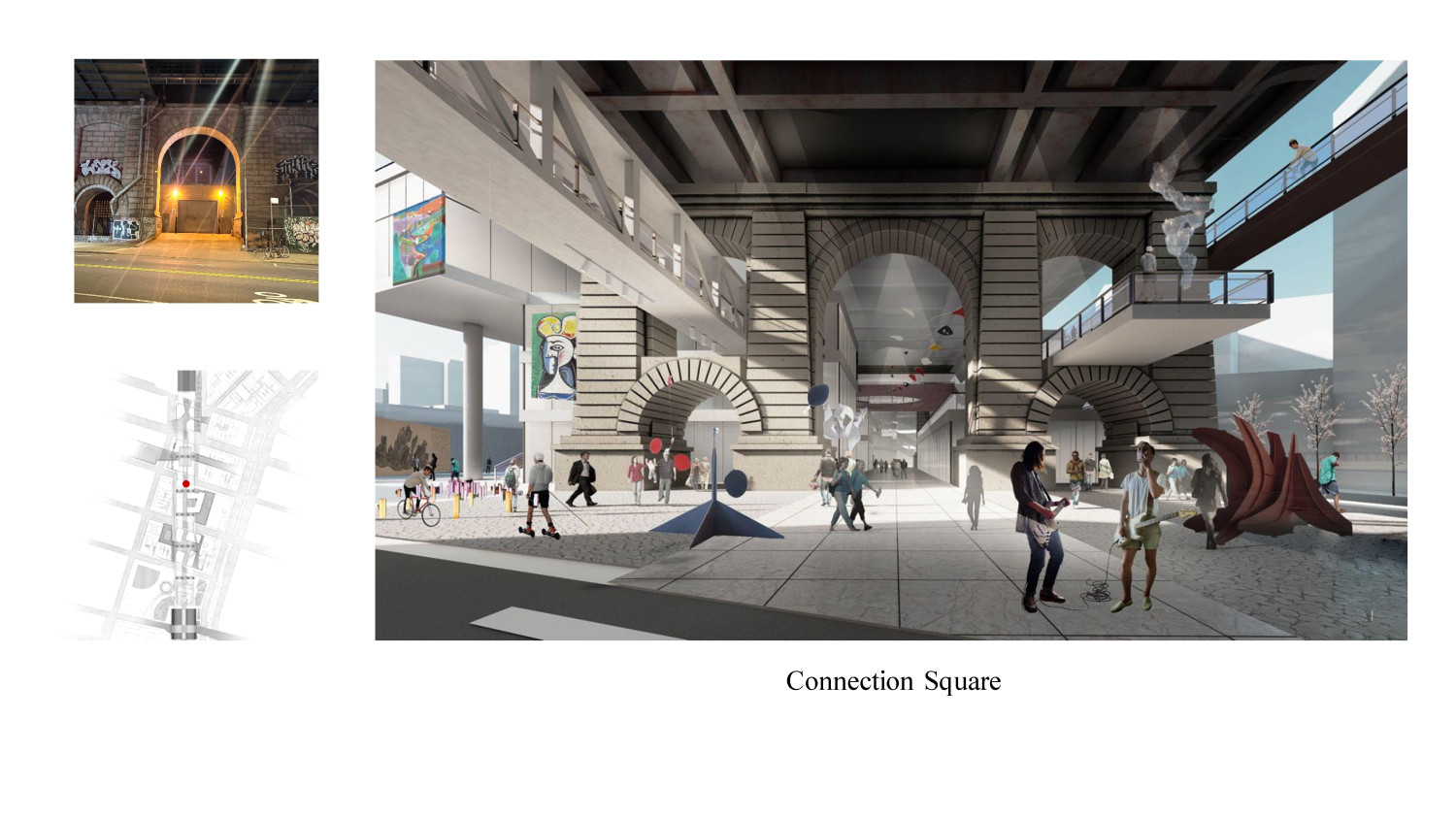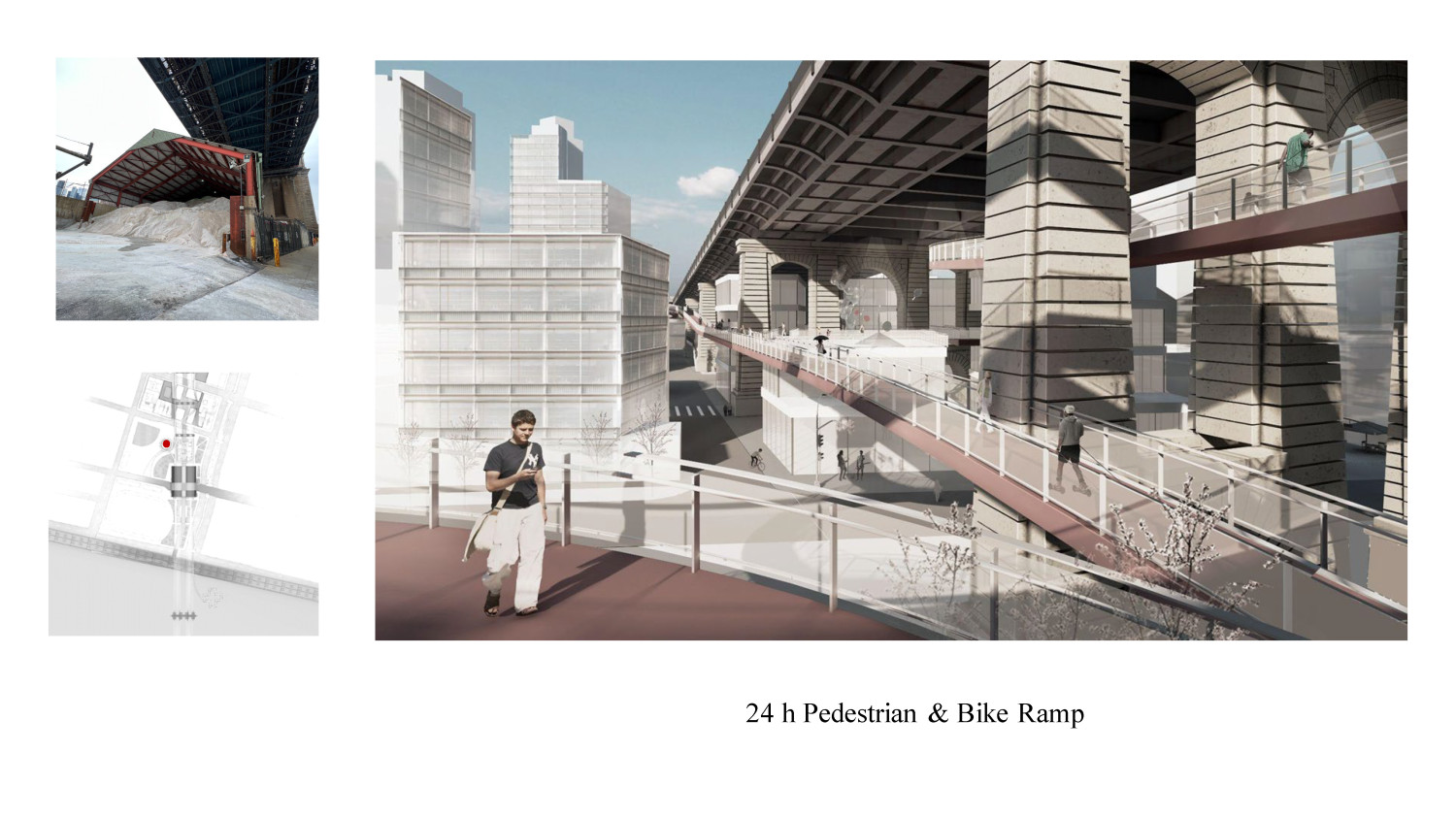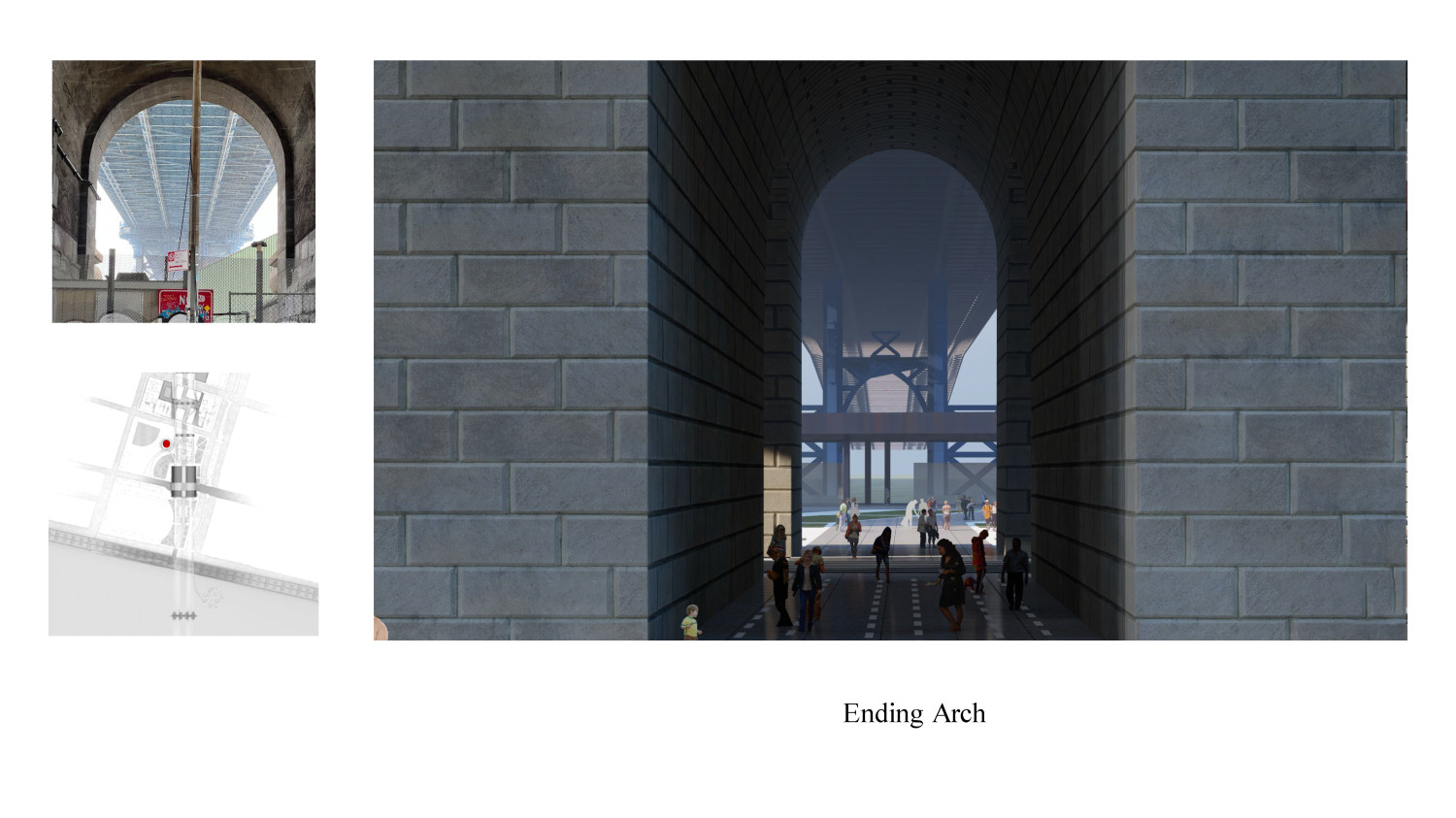The Arcade Project
# The Arcade Project
# Design and Re-positioning of Manhattan Bridge
Collaborator: Yufei Chen Advisor: Marc Simmons TA: Stewart Haotian Wu
The project starts with an argument by questioning the topic of this studio: "Re-positioning." Is re-positioning just re-branding a singular architecture object by renovating the building envelope? Or can we expand this re-positioning into the urban scale to propose a robust urban regeneration? We found the Manhattan Bridge as a site to experiment with our proposition: standing between the end of Chinatown and Brooklyn, it has been an icon of New York City since its operation in 1909. However, the remaining urban space in the shadow of this tall bridge is hidden in closed parking lots and construction sites. Under the rumble of the Manhattan Bridge, it is teeming with life on the outside, but on the inside, it's been slowly marching to all but certain death.
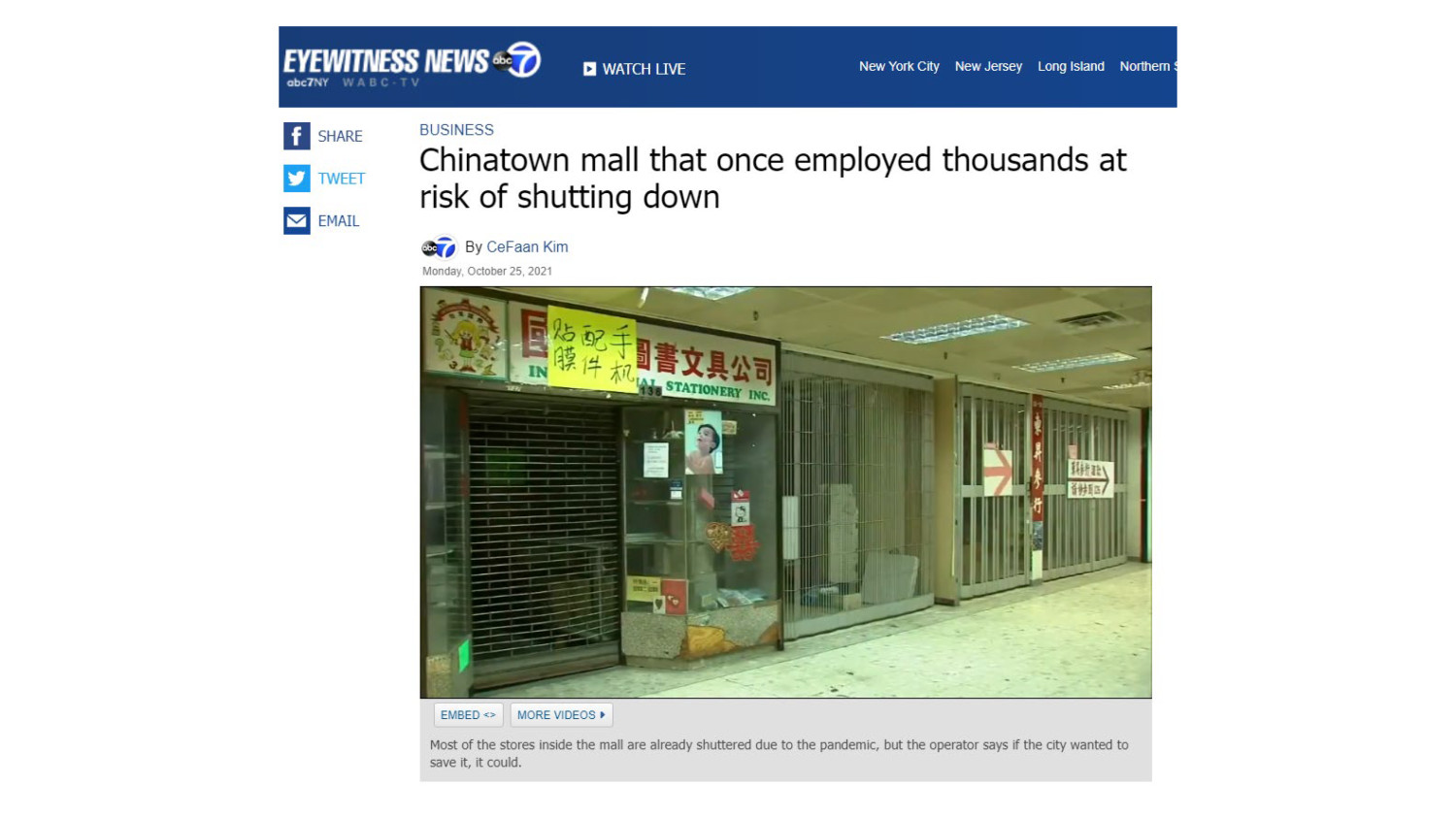
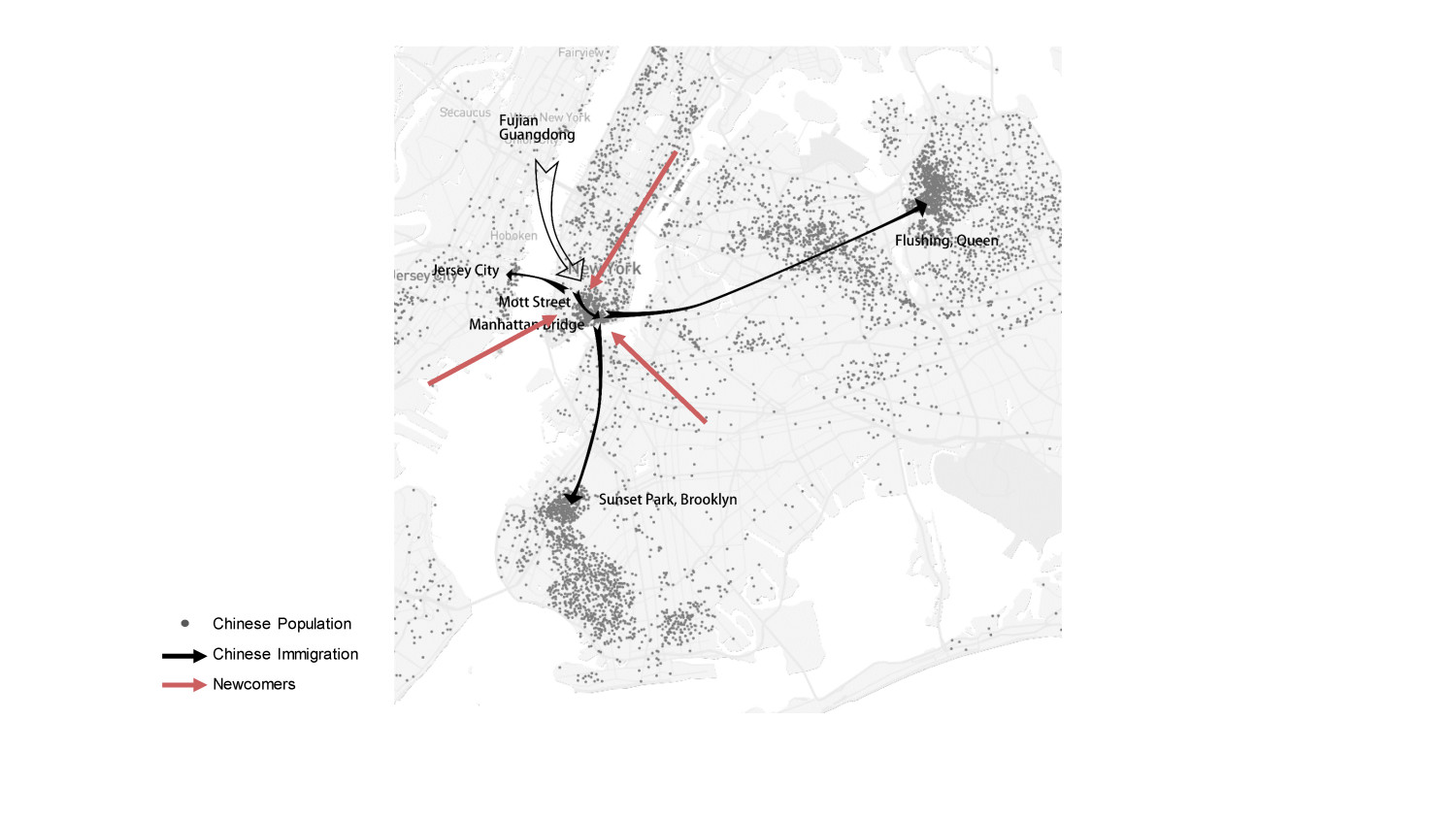
In this project, we discovered the potential value of the Manhattan Bridge. From a dead knot to a connective line, the project flipped and revealed the historical infrastructural space that used to be enclosed and hidden from the context. By proposing a new axis between the existing urban network in Chinatown, the new urban pattern forms a continuous urban corridor from north to south, which links key urban developments in East River to become a new urban nexus for New York City. Through the careful arrangement of existing and new urban elements, the project creates multiple spaces for citizens to look up, walk through, and experience the highly monumental and extraordinary arcades that support the spectacular bridge.
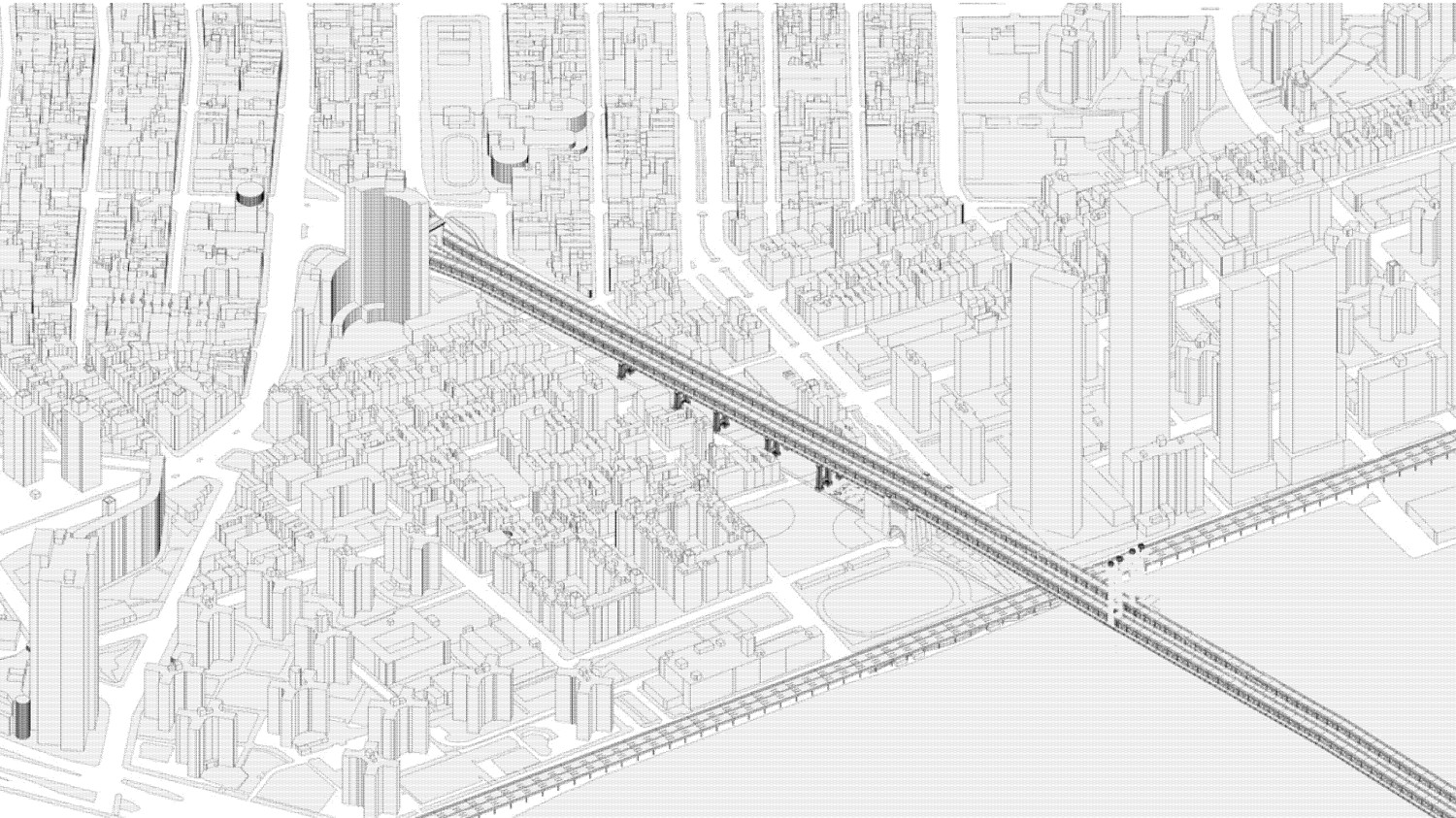
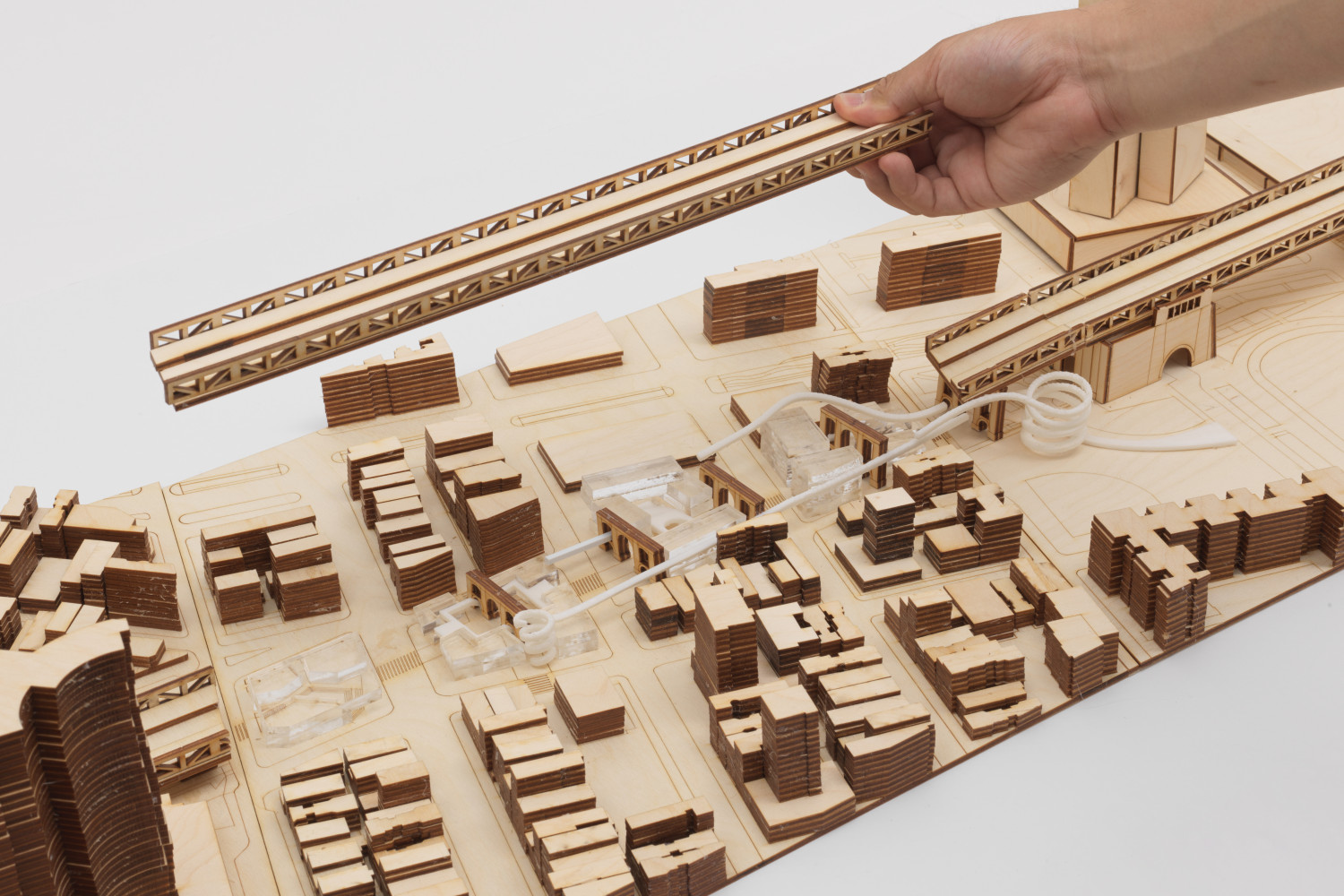
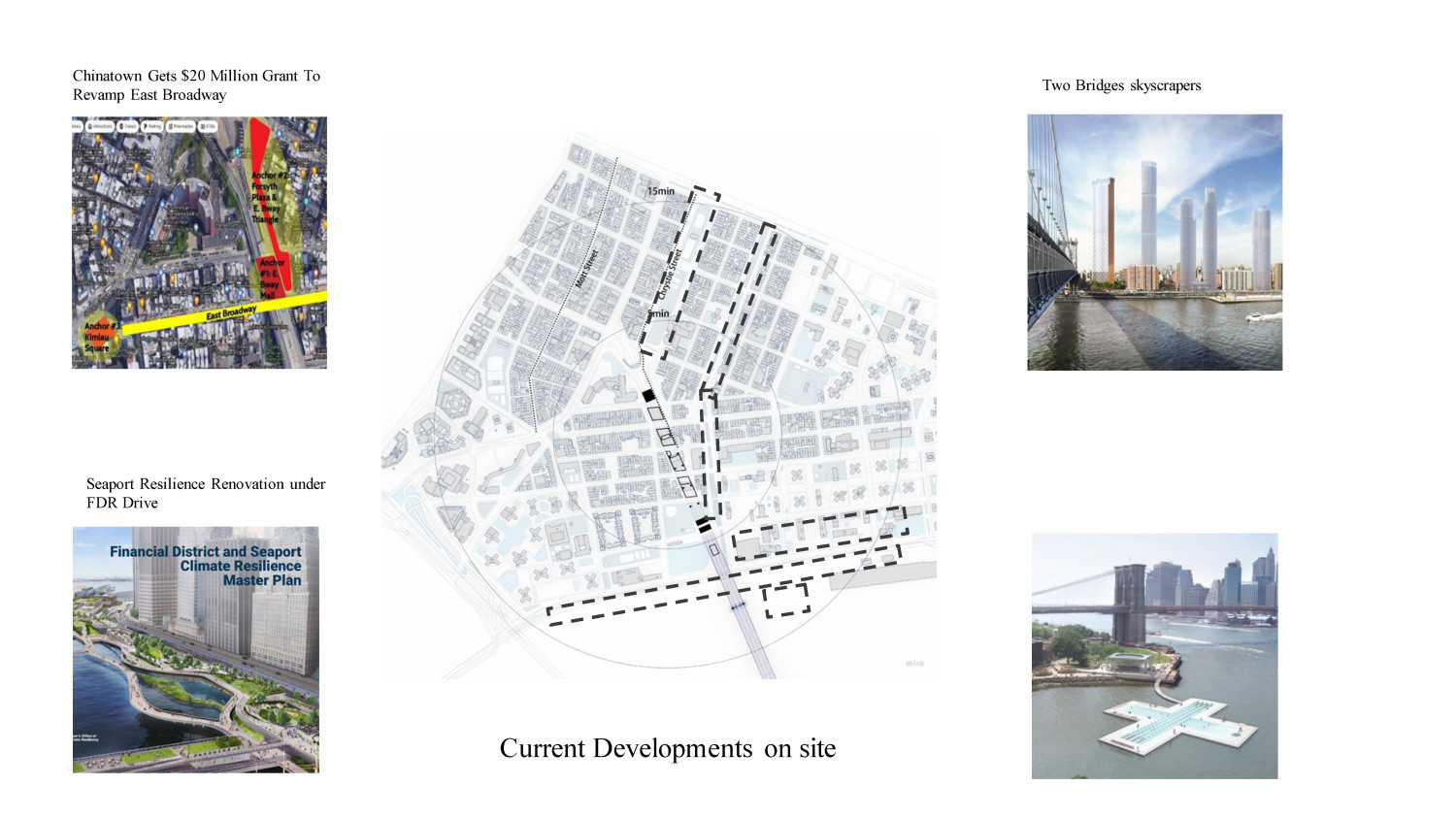
Under the proposition of overall continuity, the interventions are made up of small-scale and independent massings, which promote the possibility of stakeholder co-investment and co-creation, therefore fixing the paradoxical social groups between the old immigrant community and gentrified future residents.

